The Associated Press recently released an article detailing severe flooding that’s currently impacting the Midwest. Many people are evacuating as homes and roads continue to flood. While this situation is certainly severe, it’s also not the first time storms and excessive rainfall have ruined cities and caused extreme damage.
Through the National Oceanic and Atmospheric Administration (NOAA), people can track information and routes of hurricanes that have occurred and been documented over the past 150 years. These storms are especially known for their damaging winds, excessive rainfall, and flooding.
Outside of hurricanes, tornadoes have also been known to cause extreme damage, some even flattening entire cities. According to NOAA, about 1,200 tornadoes are documented in the United States each year. These storms can also bring damaging wind along with hail and other severe weather.
From Category 4 and 5 hurricanes to EF-5 tornadoes, our list below covers some of the most destructive storms ever recorded. While some of these severe weather patterns are as recent as the 2010s, a few date back centuries. Earlier storms were also harder to predict, leading to higher death tolls and more severe damage. As technology and information about these storms have increased over the years, so has the ability to predict the weather and give people more time to take cover or evacuate.
To create this list of devastating storms, 24/7 Tempo consulted with several resources. These include the NOAA, CNN, the National Hurricane Center, and the Storm Prediction Center. Here are 12 of the most wildly destructive storms that have flattened entire cities. (After this article, check out The Best and Worst Prepared States for Weather Emergencies.)
Hurricane Sandy
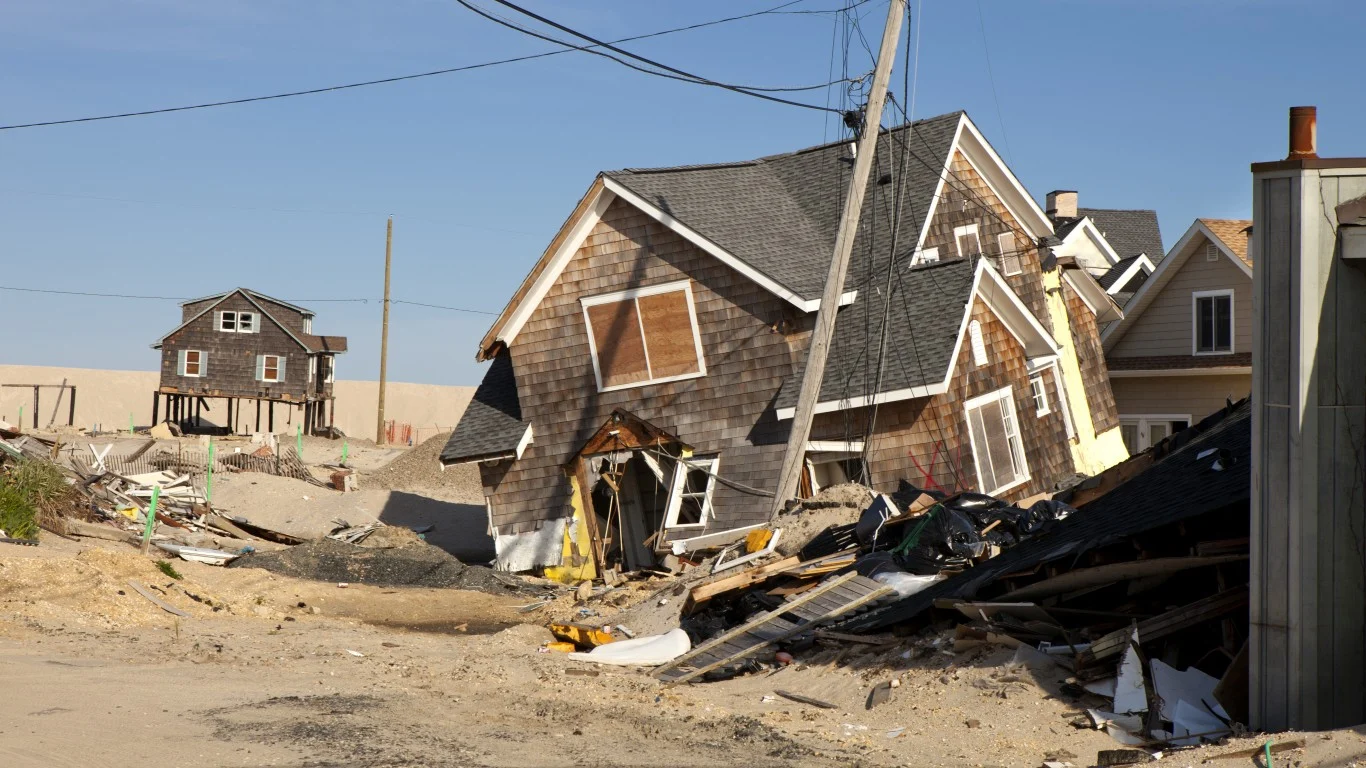
- Year: 2012
- Category: 3
- Death toll: 233
In late October, Hurricane Sandy first made landfall in Jamaica, leaving behind excessive damage and power outages. The storm moved back into the Caribbean Sea before intensifying and making landfall in Cuba. Sandy continued to move up the Eastern seaboard in the U.S. before landing in Brigantine, New Jersey.
While Sandy slowly reduced in size and impact from Jamaica to New Jersey, its hurricane-like winds and rainfall still managed to cause an immense amount of damage in the area. New York City’s government reported that Sandy caused several deaths in the country, along with power outages, school shutdowns, evacuations, and approximately $50 billion in damages.
Hurricane Hazel

- Year: 1954
- Category: 4
- Death toll: Estimated at 645
Also beginning in October, Hurricane Hazel was the most destructive storm of the 1954 season according to NOAA. The storm first began in the Caribbean Sea before moving Northward and making landfall in Haiti on October 11th. Deadly mudslides affected the country causing anywhere from 400 to 1,000 deaths from the storm.
After Haiti, Hazel made another turn Northward and landed in North Carolina near the South Carolina border on the morning of October 15th. When the storm made landfall, winds were recorded up to 150 mph. Much of the coastline was destroyed after facing a storm wall anywhere from 12 to 18 feet. Additionally, towns in Brunswick County saw the most damage. One city, Long Beach, saw only 5 buildings out of over 350 left standing after the storm passed. To date, Hazel is the only Category 4 hurricane to make landfall in North Carolina.
Hurricane Katrina
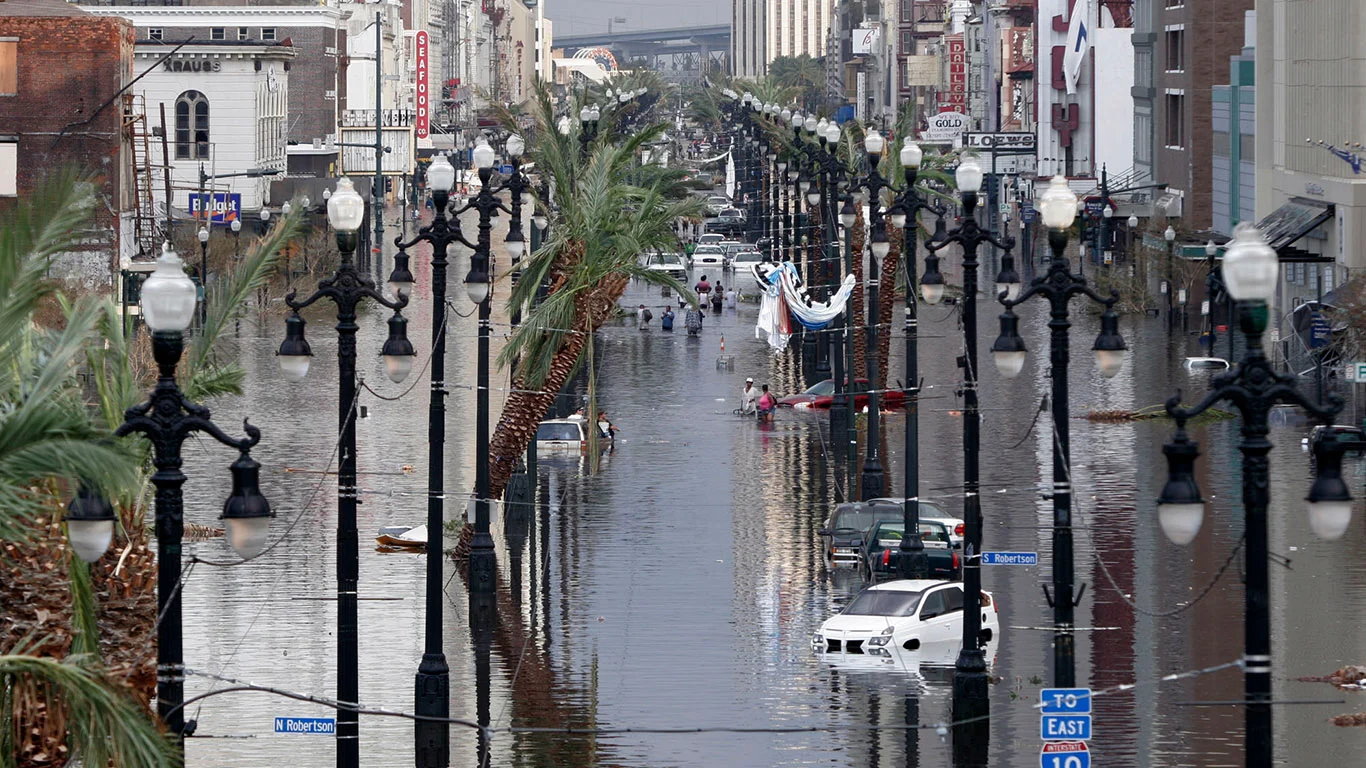
- Year: 2005
- Category: 5
- Death toll: 1,207
Widely regarded as one of the most devastating hurricanes to ever make landfall in the U.S., Hurricane Katrina caused widespread damage throughout Louisiana, Mississippi, and Florida. The storm began as a tropical storm heading for Florida. After making landfall in Southern Florida, the storm entered the Gulf of Mexico and quickly intensified.
The city that saw the most damage from Katrina was without a doubt, New Orleans. Due to weaknesses in the city’s levees, some reports indicate that 80% of the town and its neighboring parishes saw flooding due to the massive rainfall that Katrina brought with it. It has taken New Orleans years to recover from the damages.
Galveston Hurricane
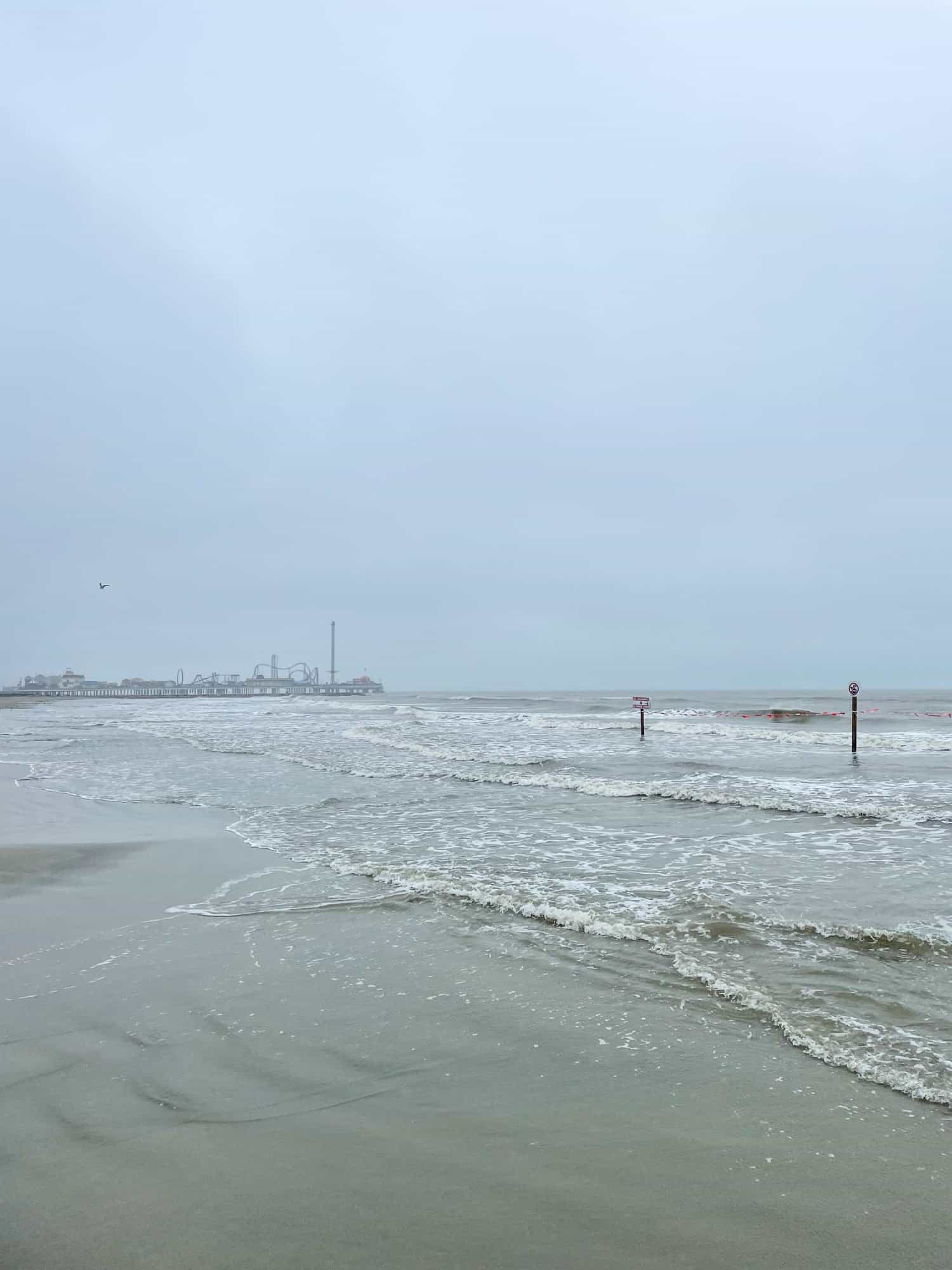
- Year: 1900
- Category: 4
- Death toll: Between 6,000 and 12,000
To date, the hurricane that landed in Galveston, Texas in September of 1900 is the deadliest national disaster in U.S. history according to History. The hurricane, which began as a weak tropical storm, first made landfall in the Dominican Republic and then in Cuba before intensifying and making its way to the Gulf of Mexico.
Unfortunately, due to a lack of communication from Washington and the newness of the U.S. Weather Bureau, many residents in Galveston weren’t prepared for the storm when it hit. By the time the storm had moved inland, over 3,500 homes had been completely destroyed and roughly 10,000 out of 38,000 residents were homeless.
Hurricane Maria
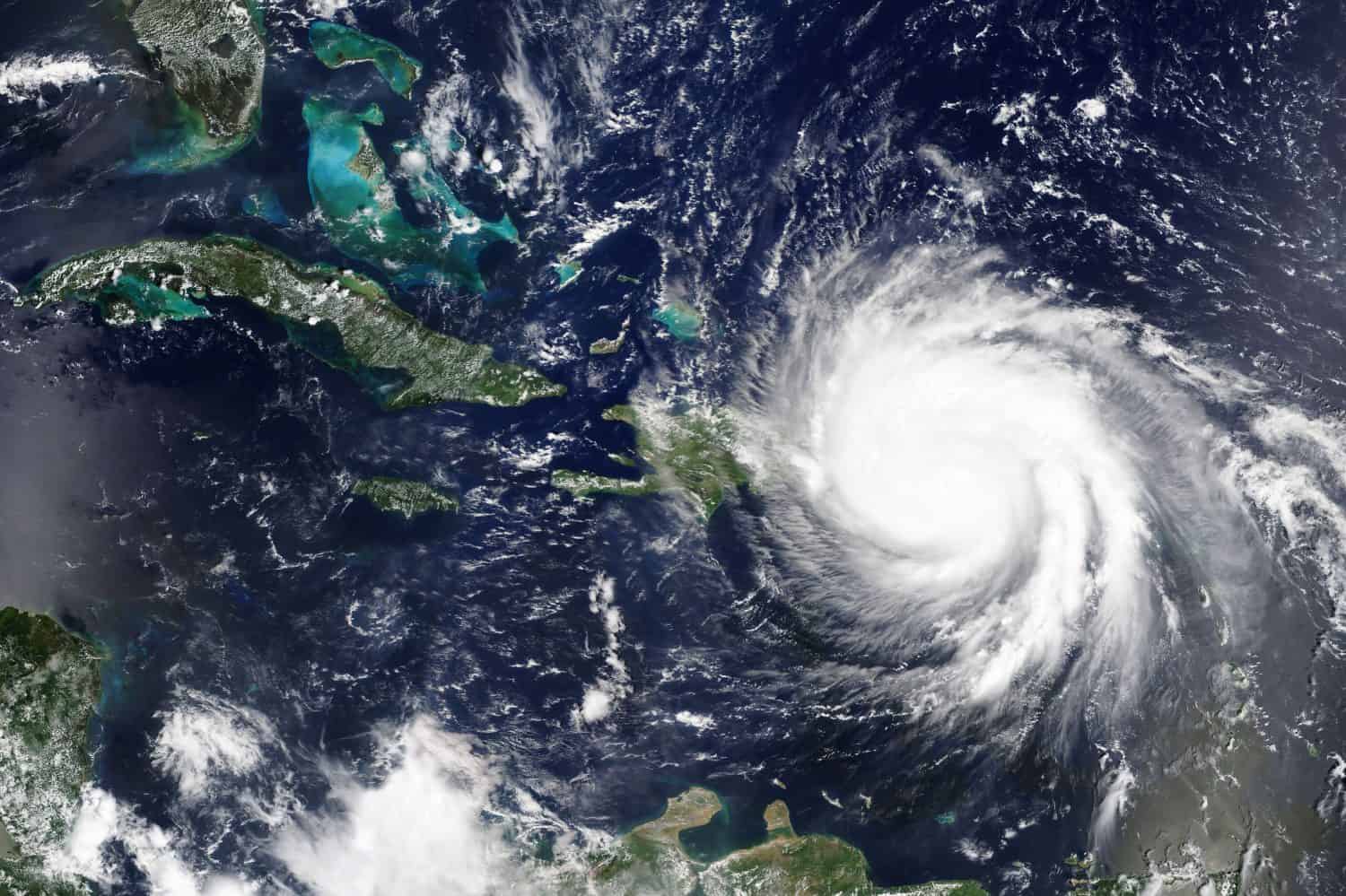
- Year: 2017
- Category: 5
- Death toll: 3,059
Though Hurricane Maria didn’t affect the United States as much as some of the other storms on our list, this hurricane wreaked havoc on the islands of Dominica and Puerto Rico. The storm made landfall in Dominica on September 18th, largely decimating the entire island. Many reported flattened buildings, a major loss of infrastructure, and the destruction of vast amounts of vegetation.
However, most of the deaths accounted for by Hurricane Maria occurred in Puerto Rico. The storm caused massive flooding and power outages that went on for months after the storm had passed. Additionally, the Carribean was still attempting to recover and receive aid after Hurricane Irma which had passed only 2 weeks prior to Maria. Due to the lack of resources and slow relief to Puerto Rico, Maria is considered the deadliest and costliest hurricane to hit the U.S. territory.
Okeechobee Hurricane
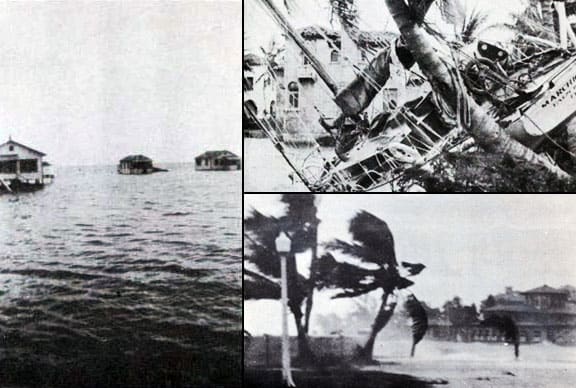
- Year: 1928
- Category: 5
- Death toll: Estimated 2,500
The Okeechobee Hurricane also called the San Felipe Segundo Hurricane, is considered the deadliest weather event to hit the state of Florida. The storm began off the coast of Africa, causing damage in Guadeloupe before landing in Puerto Rico. After the storm left severe damage and destruction on the island including massive flooding and homelessness, it made its way toward Florida.
On September 17th, the storm landed in Palm Beach, Florida, but most of the damage occurred around Lake Okeechobee. Records indicate that storm surges caused the lake to flood, creating excessive damage and an estimated 2,500 deaths. Additionally, nearly 2,000 homes were destroyed in the area.
Moore Oklahoma Tornado
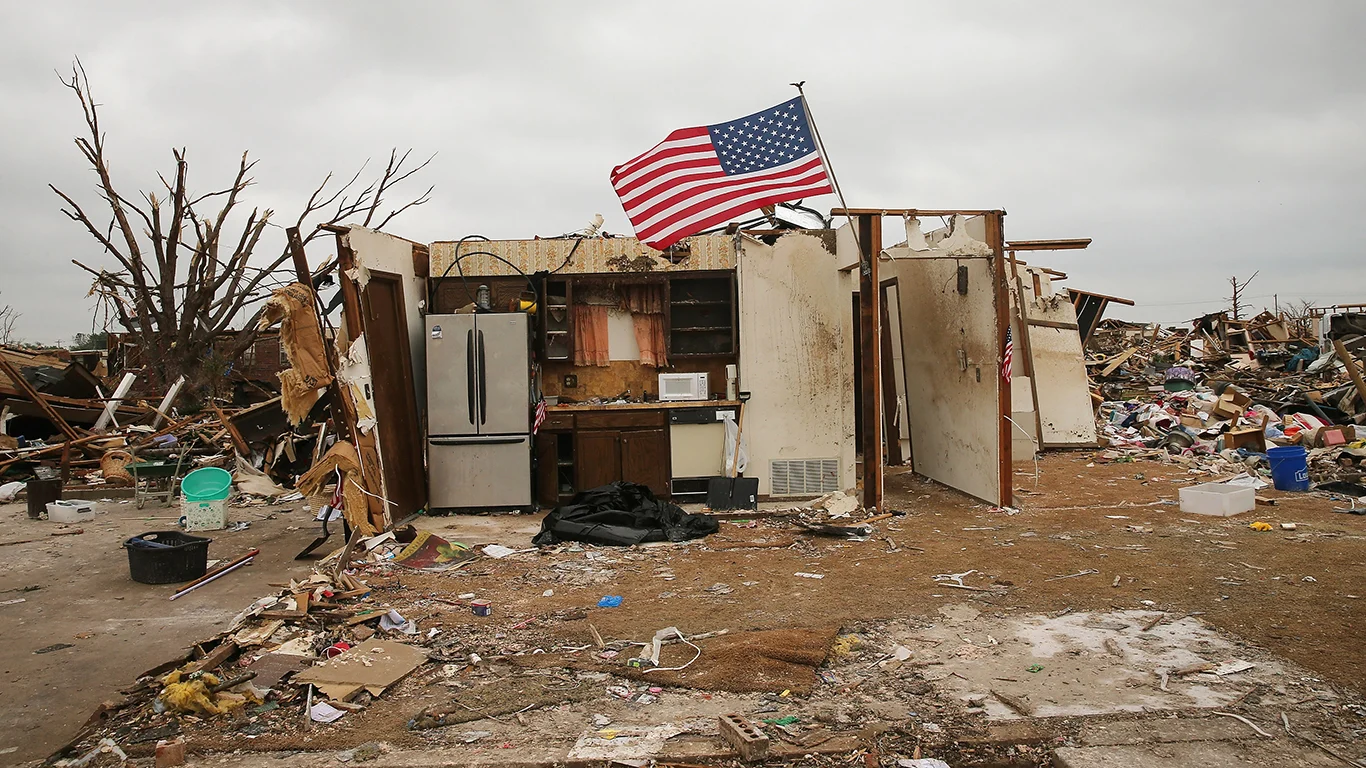
- Year: 2013
- Rating: EF-5
- Death toll: 24
On May 20, 2013, an EF-5 tornado ripped through Moore, Oklahoma, flattening homes and claiming the lives of 24 people. An Ef-5 tornado is the largest and deadliest on the Enhanced Fujita scale and typically includes wind speeds over 200 miles per hour.
When the tornado hit Moore, it spanned over a mile wide and destroyed around 1,150 homes. An article from CNN also states that the storm caused an estimated $2 billion in damage. Additionally, this tornado that ravaged Moore is the most recent EF-5 tornado on record in the U.S.
Joplin Tornado
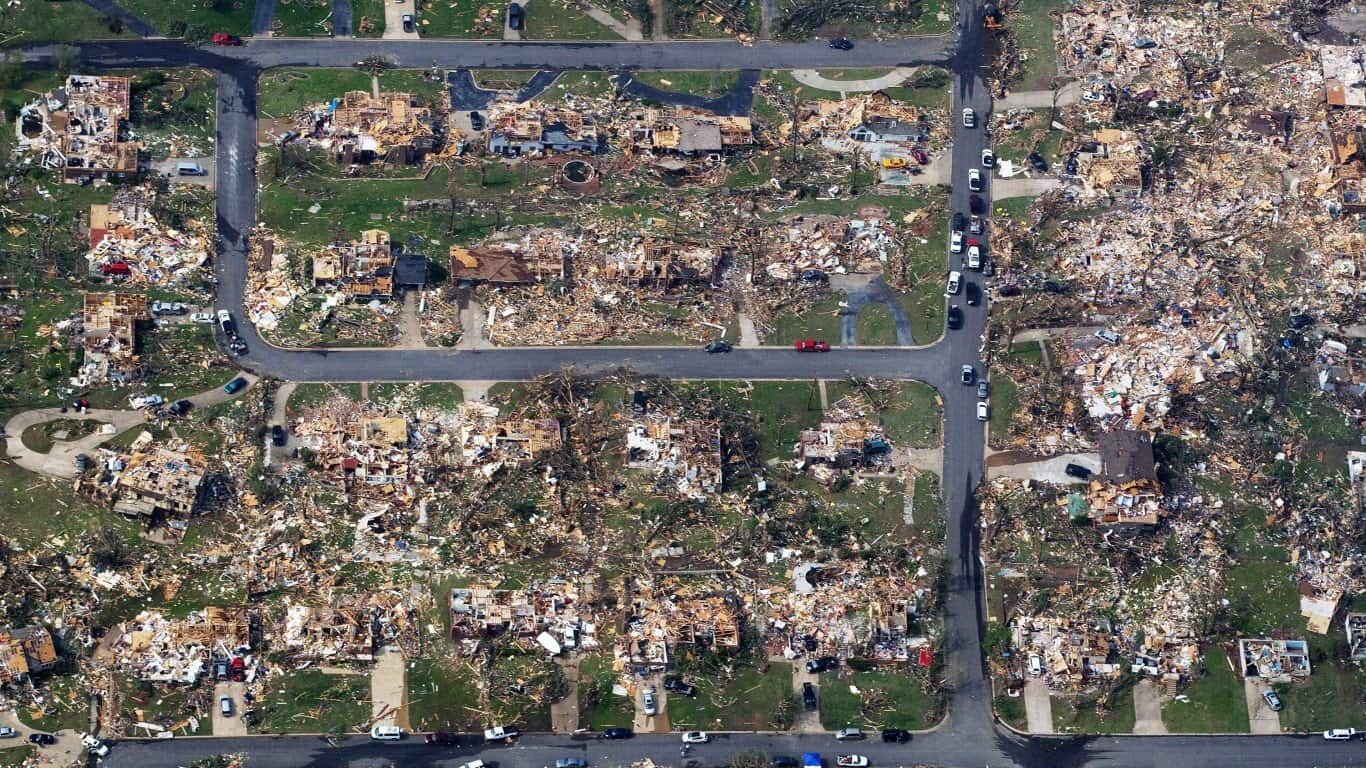
- Year: 2011
- Rating: EF-5
- Death toll: 161
Before the EF-5 tornado in Moore, a destructive storm of similar size ripped through Joplin, Missouri just two years earlier. With a width over a mile wide, the tornado stayed on the ground for 6 miles, decimating most of Joplin before reaching smaller communities and eventually dissipating.
The Joplin tornado has been ranked as one of the deadliest tornadoes in U.S. history, and the deadliest in the state of Missouri. Additionally, the storm damaged one of the city’s hospitals as well as much of the infrastructure, causing nearly $3 billion in damages. Some 8,000 structures were completely destroyed by the storm as well.
Dallas-Fort Worth Tornado
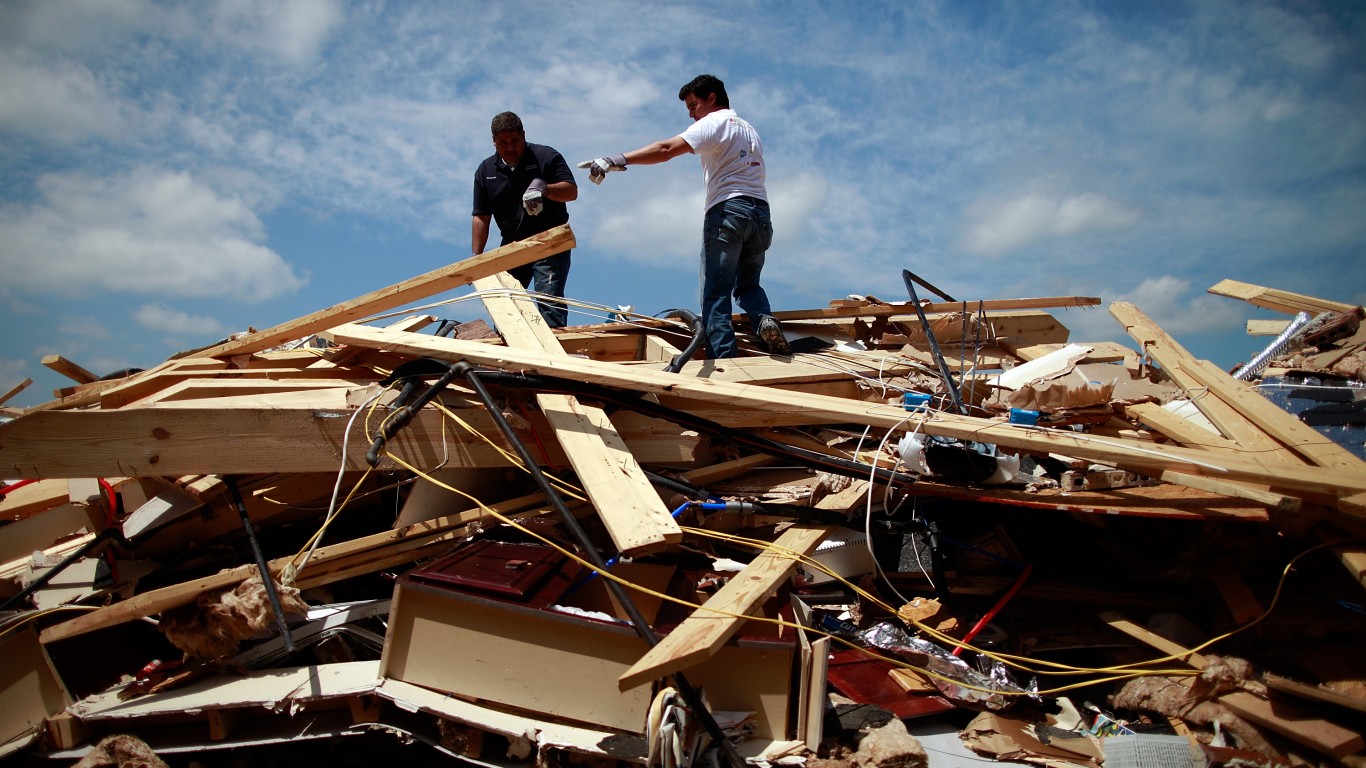
- Year: 2019
- Rating: Ef-3
- Death toll: 0
In late October 2019, meteorologists predicted a massive supercell would move through Texas, Oklahoma, and Arkansas. Their predictions proved correct, especially for the North Texas area. On October 20th, several tornadoes moved through the state, including one EF-3 that caused significant damage to Dallas and its suburbs.
By the end of the evening, a combined 10 tornadoes struck the area, leaving behind nearly $2 billion in damage and becoming the costliest tornadoes in Texas history. While no lives were lost, homes, schools, and other buildings were completely decimated. NBC 5 Dallas-Fort Worth reports that two schools were finally able to reopen their doors nearly 3 years after the tornadoes struck.
St. Louis Tornado

- Year: 1896
- Rating: F4
- Death toll: 255
While this storm struck long before the Fujita scale was in place, scientists were able to look back at this devastating tornado and rank it an F4. The supercell that struck St. Louis in the late 1800s has been recorded as the third deadliest in U.S. history, and one of the costliest in the country, as well as for the state of Missouri.
On May 27th, a supercell formed that eventually produced 18 tornadoes throughout the day, affecting both Missouri and Illinois. The F4 that hit St. Louis ravaged both the city’s downtown area as well as residential areas before making its way into East St. Louis, Illinois. All told, the storm flattened an estimated 12,000 buildings, caused $10 million in damage, and left 5,000 homeless. It also took the lives of 255 people and injured more than 1,000 others.
Birmingham-Tuscaloosa Tornado
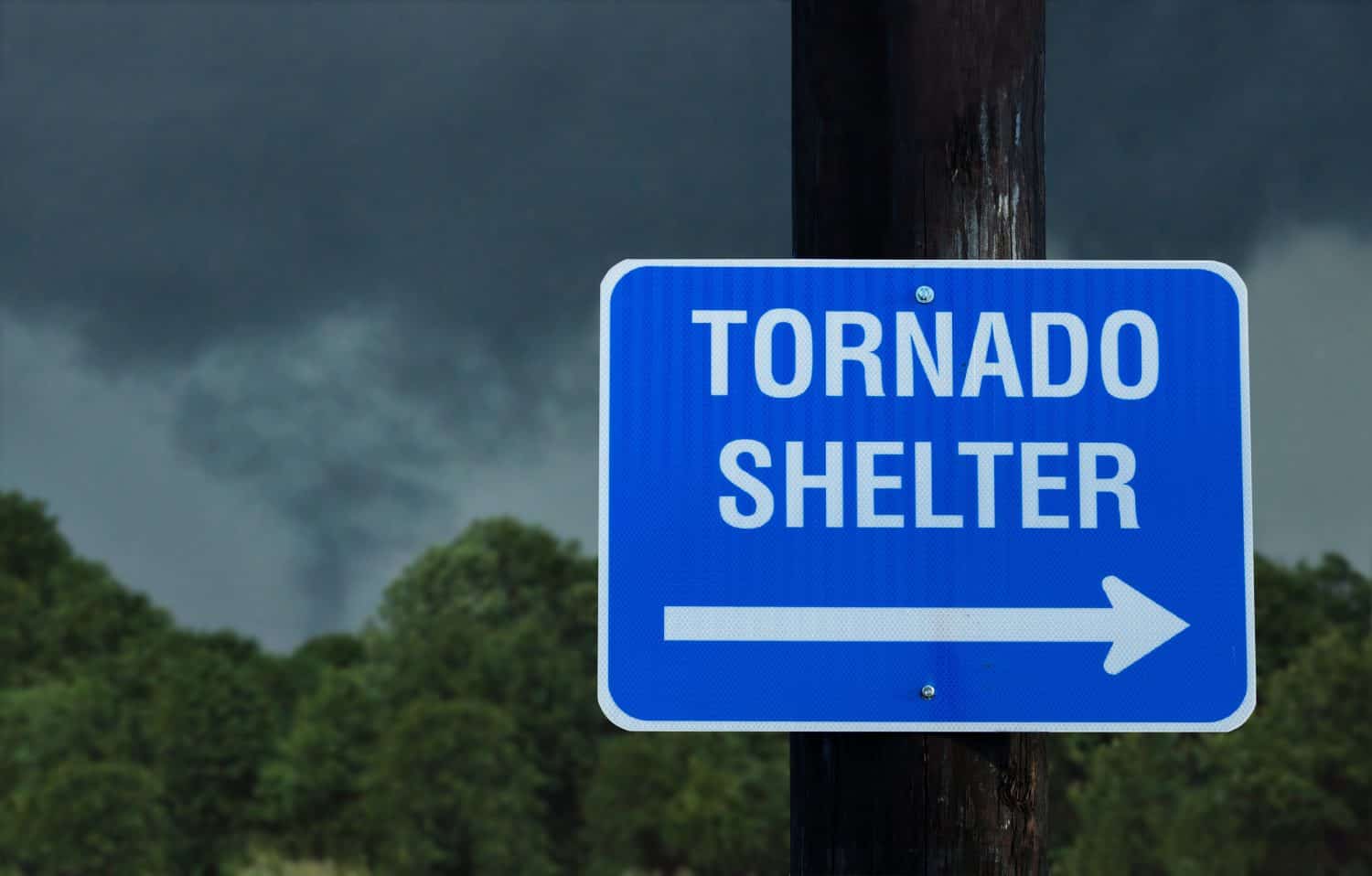
- Year: 2011
- Rating: EF-4
- Death toll: 64
Similar to the Joplin tornado, a large storm struck the city limits of both Birmingham and Tuscaloosa during the “2011 Super Outbreak.” This storm claimed the lives of 64 people, including a few students from the University of Alabama, and left behind an estimated $2.4 billion in damages.
The storm first touched down in Greene County, Alabama on April 27th. It continued to grow in strength as it approached Tuscaloosa and eventually spawned over a mile wide before reaching Birmingham. Before dissipating, this storm caused nearly 81 miles of damage and destruction.
Grand Island Tornado Outbreak
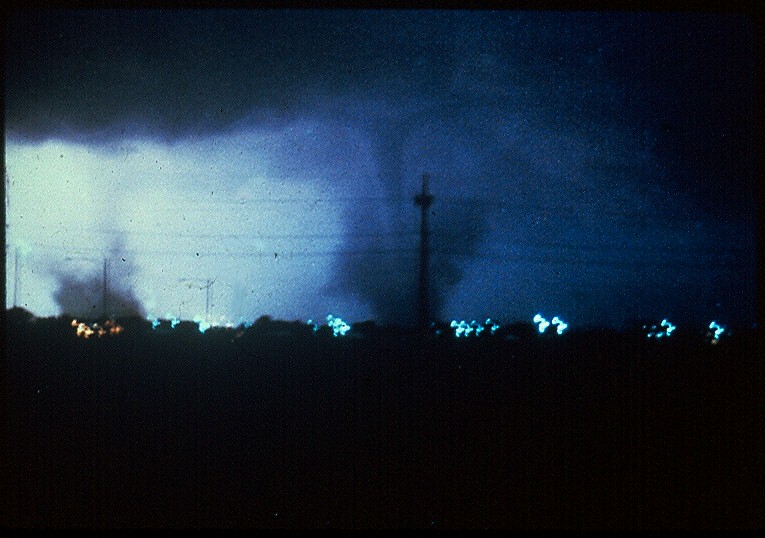
- Year: 1980
- Rating: F3 and F4
- Death toll: 5
In an unusual meteorological event, 7 tornadoes affected Grand Island, Nebraska and the surrounding areas over a time frame of 3 hours on the evening of June 3, 1980. The supercell that covered the area moved at just 8 mph, giving the storm plenty of time to produce tornadoes in the same area.
When the storm finally lifted from Grand Island, it left behind 5 deaths, 200 injuries, and roughly $300 million in damages. It also produced 3 F-3 tornadoes and 1 F-4. Additionally, the unusual event spurred a semi-fictional book entitled “The Night of the Twisters” that was later turned into a TV movie with the same name. (For more reading, click here to discover how to tell the difference between a tornado and a hurricane.)